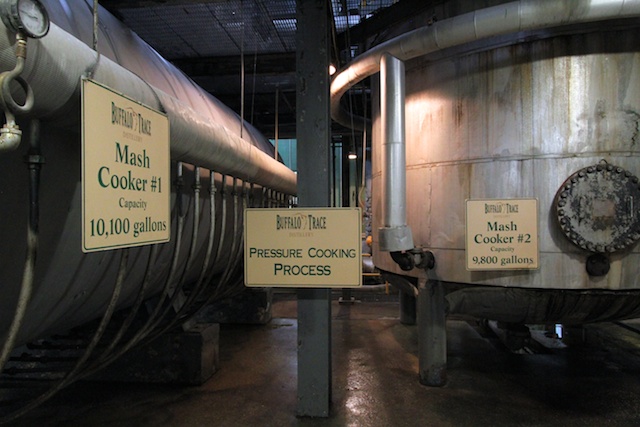Creating Different Bourbon Expressions

One question we're often asked by K&L customers concerning our various Bourbon selections is what makes one different from another. For example, if Buffalo Trace makes Buffalo Trace Bourbon, but also Eagle Rare, George T. Stagg, Rock Hill Farms, and a ton of other labels, then what's the difference between them? Obviously some whiskies are older than others. Some are obviously different in proof. But are those the only real differences?
I knew in advance of our trip that Buffalo Trace made three different mash recipes (high-rye, low-rye, and wheated) but I didn't realize that the distillery deciphered between Buffalo Trace and Eagle Rare whiskies (both from the same mash recipe) by flavor rather than by design. The Eagle Rare Bourbon has a ten year old age statement, while the BT has no statement, so age can also be a factor, but according to the guys in Frankfort it's mainly decided by flavor. Certain parts of certain warehouses create similar flavor patterns in barrels as they mature, but they still taste through the casks to see which formula they're beginning to represent over time. If the whiskey tastes more like what they consider the Buffalo Trace flavor profile, they'll mark that barrel BT. If it's starting to taste more like Eagle Rare, then they'll call that one ER. In essence, the development of the barrel can often dictate which label it ends up a part of.
Heaven Hill had a similar explanation. Different parts of the warehouse, different alcohol percentages, and different flavor developments help to direct each cask into its ultimate expression. It's not always decided in advance, but rather later on down the line.
-David Driscoll
